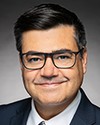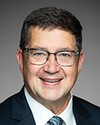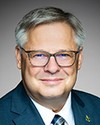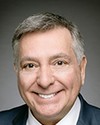Thank you, Mr. Chair, for this invitation to speak to the committee today.
I'm joining you from Montreal, which is situated on the traditional territory of the Kanienkehaka, also known as the Mohawk nation.
I'm a professor and researcher at McGill University and founding director of the Quebec Centre for Biodiversity Science. The QCBS is a strategic research network composed of more than a hundred researchers and 500 graduate students from 15 universities and colleges in Quebec. Over the last decade, QCBS has fostered and supported citizen science projects in Quebec, Canada, and elsewhere around the world.
Last December saw the historic agreement of the Kunming-Montreal global biodiversity framework of the UN Convention on Biological Diversity. This landmark plan with four goals and 23 targets is designed to avert the global biodiversity crisis. The text recognizes the essential knowledge contributed by indigenous peoples, local communities and citizen groups the world over. Without them, we know we will not reach these targets.
I am not exaggerating when I say that the last decade has seen a transformation in the participation and contribution of citizens to biodiversity science, where citizens with different levels of expertise can engage in scientific projects.
New technologies have been part of this story. For example, the social network iNaturalist, which allows citizens to take photos of organisms and share them with their phones, has recorded 9.7 million observations of nearly 35,000 species made by 171,000 Canadian citizens. This is a truly remarkable contribution and, indeed, this activity is filling large gaps in our knowledge of Canada's biodiversity.
A report in 2010 by the federal, provincial and territorial governments of Canada called “Canadian biodiversity: ecosystem status and trends 2010” concluded that we lack “long-term, standardized, spatially complete, and readily accessible monitoring information”. This significantly hinders our capacity to assess the status and health of Canada's ecosystems.
This quote is as relevant today as it was in 2010. Our task of monitoring biodiversity change in Canada cannot be achieved by government or researchers alone. Citizen science is vital.
In response to this growth, the QCBS has invested in projects designed to initiate and support citizen science. We do this in collaboration with partners such as government ministries, conservation NGOs and zoos. You can find the projects on the QCBS public portal called Quebio, but allow me to briefly describe a few of them.
Alarming trends in bird, bat and bee populations have been the focus of several successful citizen-led projects. The project Des nids chez vous or Nests at Home encouraged more than 500 elementary school kids to install nest boxes in their backyards and to monitor the presence of nesting birds via the project's website. When a bird box is occupied, scientists then track the health and success of the fledglings to understand the long-term fate of the bird population. To date, these children have made more than 4,500 observations of 111 bird species. The scientific and educational value of a project like this is obviously remarkable.
In the pan-Canadian project Bat Watch, citizens have reported the presence of over 900 bat colonies in their attics, barns or bat boxes, allowing scientists to track the impact of something called white-nose syndrome, a disease that is causing unprecedented mortality in hibernating bats in Canada.
Citizens are also helping to digitize hundreds of thousands of plant specimens in herbarium collections, thanks to an online platform developed by the QCBS. This is providing precious historical reference data now in digital form to the research community.
Canadian citizens are also contributing internationally through applications like iNaturalist, eBird or eButterfly, assisted by artificial intelligence and taxonomic experts, to report observations of wild species in other countries, and this information is being shared globally.
Citizen science also promotes science education. It allows participants to understand the wildlife and the ecosystems that surround them. Citizens are becoming experts in their own right and, in fact, able to further support the scientific activities in their communities. A recent study showed that volunteers who participated in citizen science activities have elevated scores of well-being.
In summary, the participation of citizens in research is having a transformative effect on science and society at large. We recognize the remarkable contribution of citizen science to understanding and averting the biodiversity crisis. We are only just learning to promote this society-wide effort. We hope that this committee will recognize these initiatives.
The QCBS will be very happy to provide additional information and support to the task of this committee. I look forward to your questions.
Thank you very much.




